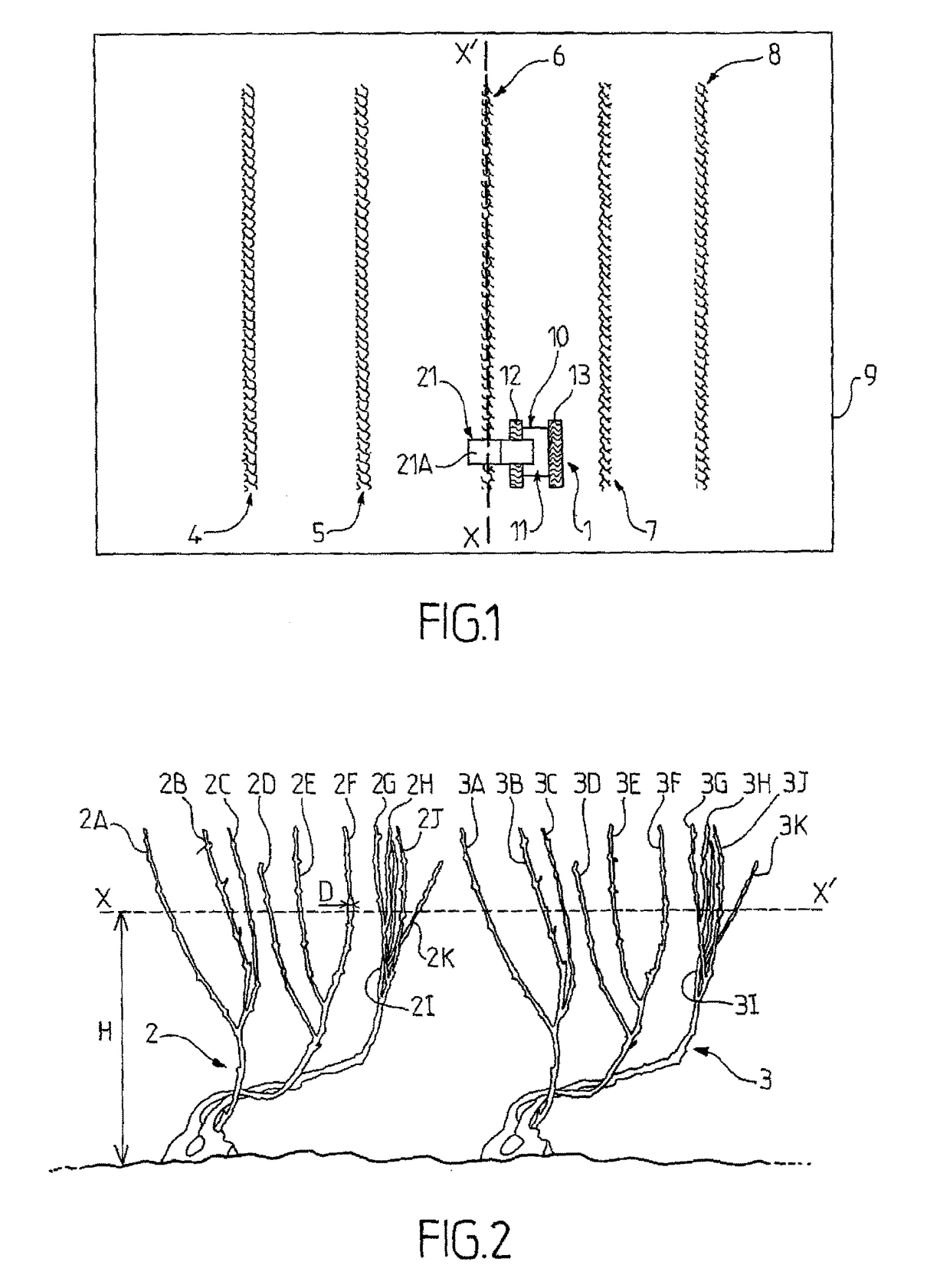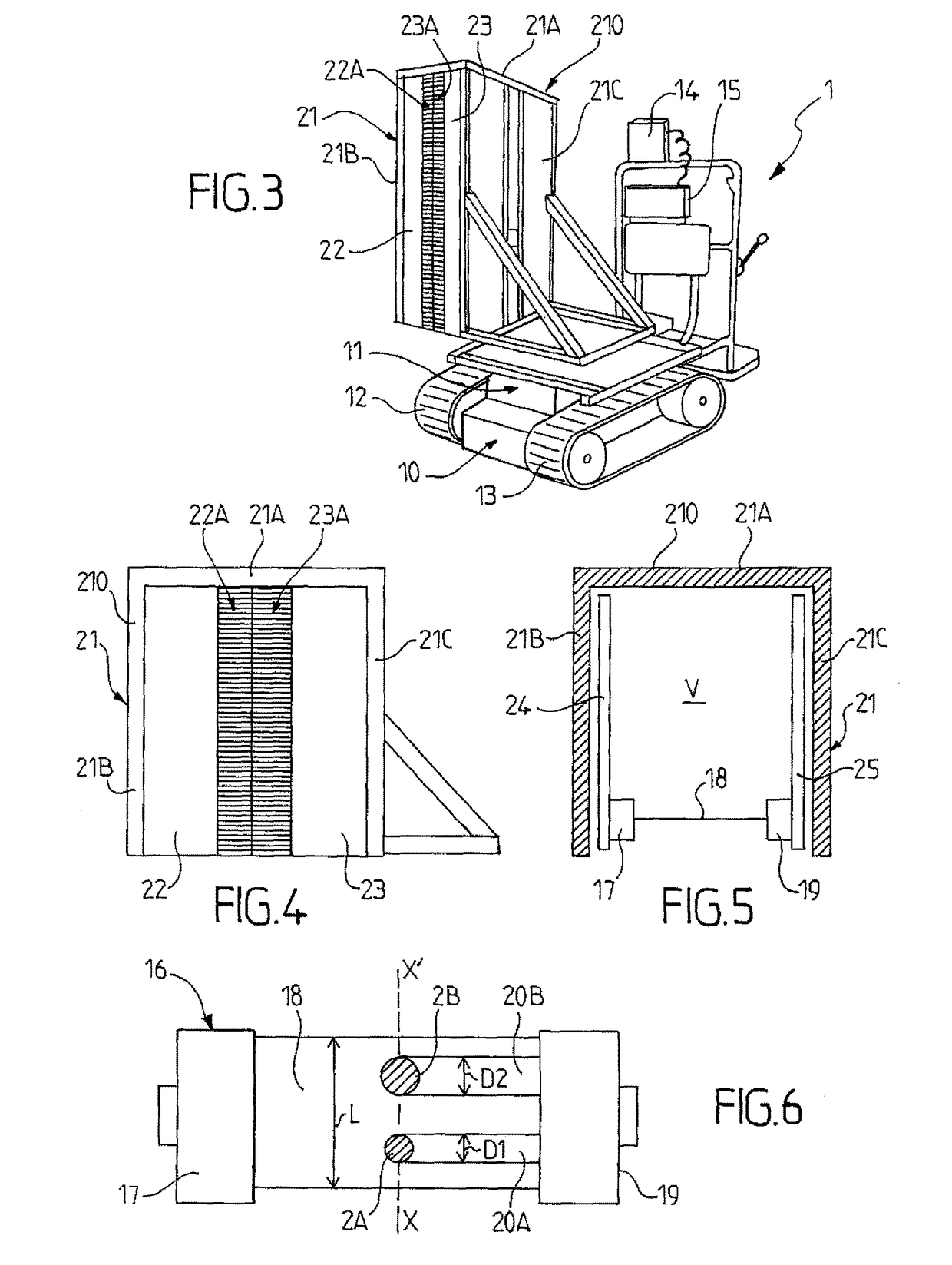System for characterizing the physiological state of plants and corresponding method
a physiological state and plant technology, applied in the field of agricultural machinery, can solve the problems of inability to measure the concentration of chlorophyll, the information obtained is generally too rough to produce an optimal, and the technology implemented does not allow the measurement of chlorophyll concentration, etc., to achieve a fine and accurate map of the variability of physiological parameters
- Summary
- Abstract
- Description
- Claims
- Application Information
AI Technical Summary
Benefits of technology
Problems solved by technology
Method used
Image
Examples
Embodiment Construction
[0039]The invention relates, according to a first aspect, to a system 1 for characterizing the physiological state of woody plants 2, 3, with branches 2A, 2B, 2C, 2D, 2E, 2F, 2G, 2H, 2I, 2J, 2K, 3A, 3B, 3C, 3D, 3E, 3F, 3G, 3I, 3H, 3J, 3K grown in rows 4, 5, 6, 7, 8, of the vine or fruit-tree type. Preferably, as illustrated in the Figures, said rows 4, 5, 6, 7, 8 are arranged parallel to each other, with an inter-row gap that is advantageously substantially constant over the whole concerned plot 9. Each concerned row 4, 5, 6, 7, 8 is formed of plants arranged in rows, one behind each other, and potentially comprises a system of staking and / or tying intended to form a structure to support the woody plants forming the rows 4, 5, 6, 7, 8 and to orient their growth.
[0040]Preferably, the characterizing system 1 according to the invention is specially adapted to characterize the physiological state of vine plants grown in rows in a plot 9 of a vineyard. However, the invention is not limit...
PUM
| Property | Measurement | Unit |
|---|---|---|
| width | aaaaa | aaaaa |
| width | aaaaa | aaaaa |
| frequency | aaaaa | aaaaa |
Abstract
Description
Claims
Application Information
 Login to View More
Login to View More - R&D Engineer
- R&D Manager
- IP Professional
- Industry Leading Data Capabilities
- Powerful AI technology
- Patent DNA Extraction
Browse by: Latest US Patents, China's latest patents, Technical Efficacy Thesaurus, Application Domain, Technology Topic, Popular Technical Reports.
© 2024 PatSnap. All rights reserved.Legal|Privacy policy|Modern Slavery Act Transparency Statement|Sitemap|About US| Contact US: help@patsnap.com










